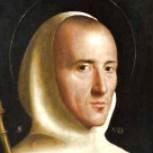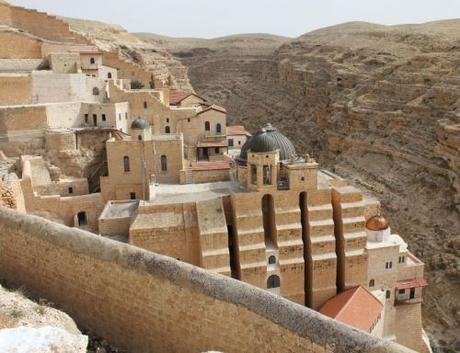
Stephen of Mar Saba was the nephew of the great early Church Father, St. John Damascene, who was known in part for fighting the Iconoclast controversy that darkened the 8th century. St. John introduced Stephen, when he was ten years of age, to the monastic life, wherein Stephen was taken to the monastery of Saint Sabas (Mar Saba) where he became a monk.

It was in this environment for the next 14 years of his life, that Stephen received his education and formation, wherein he was ordained a priest. On one occasion when he was celebrating Mass, a brilliant light emanated from him, wherein he received the mystical favor that whatever specific intention he prayed for during the Eucharistic liturgy, that intention was granted.
Stephen was a talented individual who served the community earnestly, which included being a guest master. He knew how to serve others and how to be hospitable. He was also a valuable counselor. At or about the age of 24, receiving a calling to prayer, silence and meditation, he requested of the abbot to live a hermit’s life. The abbot granted his request, but qualified it requiring Stephen on the weekends to continue serving as a counselor, because he had invaluable “people” skills, a real social sense. Stephen put this note, an actual “do not disturb sign,” on the door of his cell, “Forgive me, Fathers, in the name of the Lord, but please do not disturb me except on Saturdays and Sundays.”
He, like St. Francis of Assisi, loved God’s creation, especially the animals. The birds came to him as he fed them out of his hands, such as doves and starlings, and he fed the deer similarly. Most noteworthy is the fact that he even had empathy and love for the black worms that crawled through his hermitage which motivated him to gather the worms into a spot where they would not be stepped on, so that they would be safe.
It is important and noteworthy that at the end of Stephen’s life, he reported that various cities, such as Gaza, were laid waste by the Saracens, which is another term used to describe the Muslim Caliphate under the rule of the Umayyad and Abbasid dynasties. Accordingly, many monks met their death/martyrdom.
A biographer wrote about Stephen, “Whatever help, spiritual or material, he was asked to give, he gave. He received and honored all with the same kindness. He possessed nothing and lacked nothing. In total poverty he possessed all things.”
With respect and love,
Joan
Sources: Franciscan Media; Catholic Online

